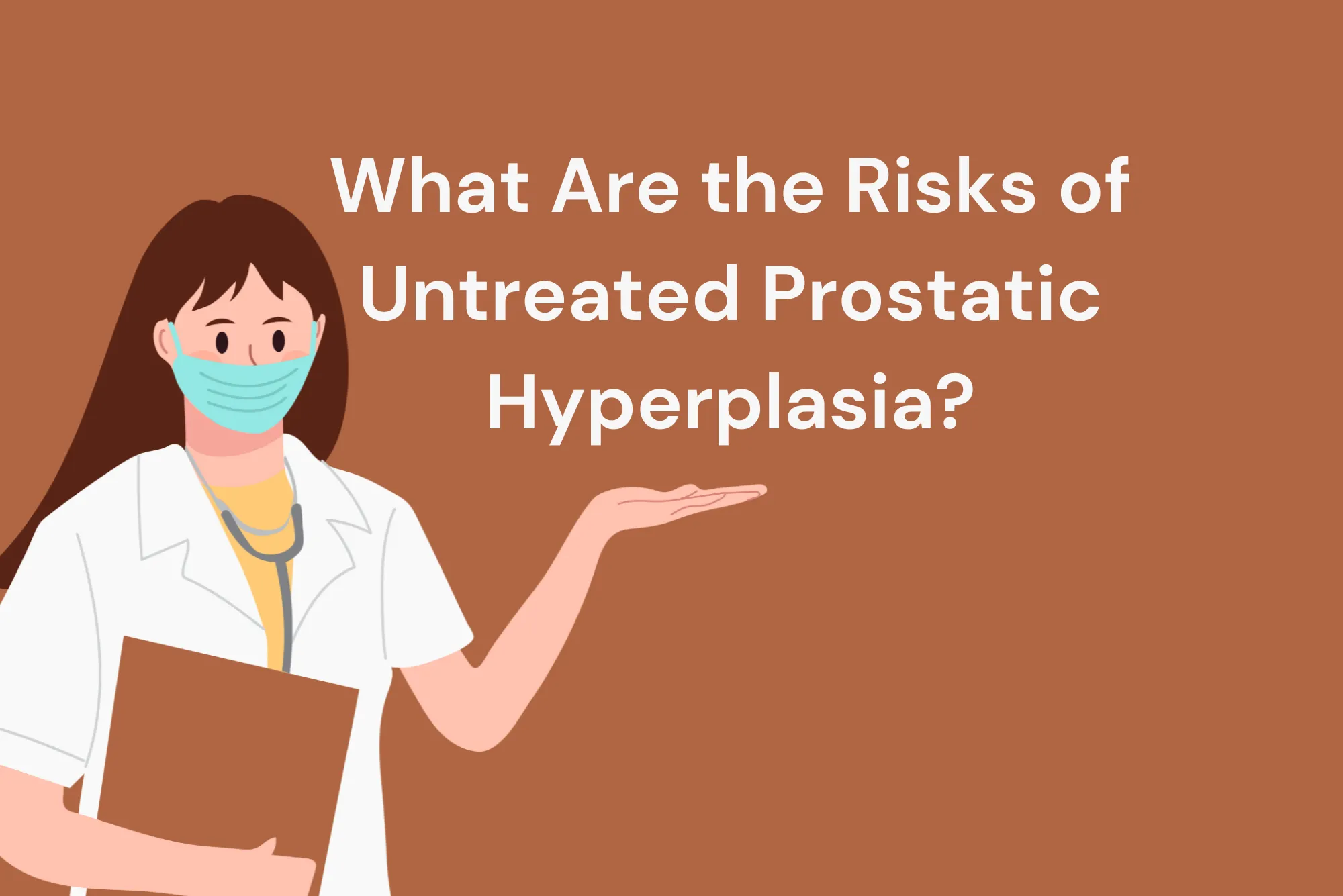Prostatic hyperplasia, commonly known as benign prostatic hyperplasia (BPH), is a condition that affects many men as they age. It occurs when the prostate gland enlarges, leading to urinary issues and potential complications if left untreated. While BPH is not cancerous, neglecting proper treatment can result in severe health risks. Understanding these risks can help individuals seek timely medical intervention and improve their quality of life.
Understanding Prostatic Hyperplasia and Its Causes
The prostate is a small gland located below the bladder and surrounding the urethra. Its primary function is to produce seminal fluid, which is essential for reproduction. However, as men grow older, hormonal changes can cause this gland to enlarge, leading to prostatic hyperplasia. Common causes include aging, genetics, and hormonal imbalances, particularly changes in testosterone and dihydrotestosterone (DHT) levels.
Common Symptoms of Untreated Prostatic Hyperplasia
When prostatic hyperplasia progresses without treatment, symptoms worsen over time. Some of the most prevalent symptoms include:
- Frequent urination, especially at night (nocturia)
- Difficulty in starting and maintaining a urine stream
- Weak or interrupted urine flow
- A feeling of incomplete bladder emptying
- Urinary urgency and incontinence
- Pain or discomfort during urination
These symptoms may initially seem manageable, but ignoring them can lead to significant complications that impact overall health.
Risks of Leaving Prostatic Hyperplasia Untreated
1. Increased Risk of Urinary Retention
One of the most serious risks of untreated prostatic hyperplasia is acute urinary retention (AUR). This condition occurs when the enlarged prostate obstructs the urethra, preventing urine from passing. AUR is a painful and potentially life-threatening emergency that requires immediate medical intervention, such as catheterization or surgery.
2. Bladder Damage and Weakness
Over time, constant strain on the bladder due to incomplete emptying can lead to bladder muscle dysfunction. The bladder may become overstretched or weakened, reducing its ability to contract properly. This can result in long-term urinary issues, even if the prostate is later treated.
3. Kidney Damage and Failure
When urine is unable to pass through the bladder efficiently, it can back up into the kidneys, leading to a condition known as hydronephrosis. This swelling of the kidneys can cause significant damage, impairing their ability to filter waste and regulate fluids. If left untreated, kidney damage can progress to kidney failure, requiring dialysis or a transplant.
4. Frequent Urinary Tract Infections (UTIs)
Incomplete bladder emptying increases the risk of bacterial growth, leading to recurrent urinary tract infections (UTIs). Symptoms of UTIs include pain during urination, fever, and cloudy or foul-smelling urine. Chronic UTIs can further damage the bladder and kidneys, complicating overall health.
5. Bladder Stones Formation
When urine remains in the bladder for extended periods due to incomplete emptying, minerals in the urine can crystallize and form bladder stones. These stones can cause severe pain, block urine flow, and lead to infections, further exacerbating urinary issues.
6. Increased Risk of Prostate Infections
Chronic urinary retention caused by an enlarged prostate can create an environment where bacteria thrive, leading to recurrent prostate infections (prostatitis). Prostatitis can cause pain in the pelvic area, painful urination, and flu-like symptoms, significantly impacting a person’s quality of life.
7. Compromised Sexual Health
Untreated prostatic hyperplasia can contribute to sexual dysfunction, including decreased libido, erectile dysfunction (ED), and painful ejaculation. The condition can also cause anxiety and stress, which further affects sexual performance and mental well-being.
Effective Prostatic Hyperplasia Treatment Options
Fortunately, various prostatic hyperplasia treatment options are available to manage and alleviate symptoms. The choice of treatment depends on the severity of the condition and the patient’s overall health. Common treatment methods include:
- Lifestyle Modifications: Maintaining a healthy diet, staying physically active, and avoiding excessive caffeine and alcohol can help manage mild symptoms.
- Medications: Alpha-blockers and 5-alpha reductase inhibitors help relax the prostate muscles and reduce gland size.
- Minimally Invasive Procedures: Techniques like transurethral microwave therapy (TUMT) and transurethral resection of the prostate (TURP) can improve urinary function.
- Surgical Interventions: In severe cases, prostate surgery may be necessary to remove excess tissue and restore normal urinary flow.
Seeking medical advice early can prevent complications and improve overall health outcomes.
Preventive Measures to Reduce Risks
To reduce the risks associated with untreated prostatic hyperplasia, men should adopt preventive measures such as:
- Scheduling regular prostate health checkups, especially after the age of 40
- Staying hydrated and maintaining a balanced diet rich in fruits, vegetables, and omega-3 fatty acids
- Engaging in regular physical activity to promote healthy blood circulation
- Managing stress levels through meditation, yoga, or relaxation techniques
- Avoiding smoking and excessive alcohol consumption
By taking proactive steps, men can significantly lower their risk of developing severe complications related to an enlarged prostate.
For more informative health articles and wellness insights, visit The Sky Stars. Stay updated with expert-backed health tips and medical advancements for a healthier lifestyle.





